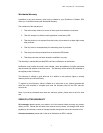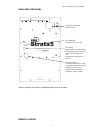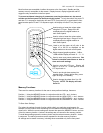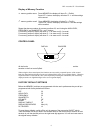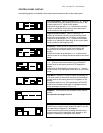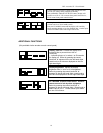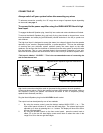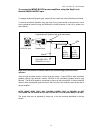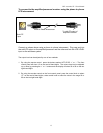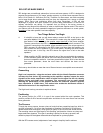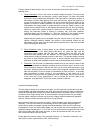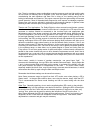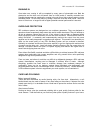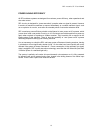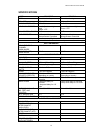
REL Acoustics ST 5 User Manual
16
Hint: There is a tendency among audiophiles to set the crossover point too high and the gain
too low when first learning how to integrate a REL with the system, the fear being one of
overwhelming the main speakers with bass. But in doing so, the resulting set-up will be
lacking in bass depth and dynamics. The proper crossover point and gain setting will increase
overall dynamics, allow for extended bass frequencies, and improve soundstage properties.
Please note: gain must be adjusted in conjunction with crossover changes. In general, when
selecting a lower crossover point, more gain may need to be applied.
Theatre and Film Applications:
For DolbyDigital or other surround sound theatre systems,
once the standard set-up for two-channel outlined above is complete, the LFE output from the
processor or receiver should be connected to the low-level input and appropriate gain
adjustments made. Keep phase consistent with what was selected during high-level set-up.
For this configuration, you must set the processor to the “large” or “full range” setting for the
left and right speakers in order for the REL to receive the bass signal via the high-level cable.
In this setting, the REL provides support for both the left and right speakers for two-channel
listening, and support for the LFE when movies are playing. Most processors will allow you to
defeat the subwoofer output when listening in the two-channel mode, however, if this is not
the case, simply press LFE Mute on the remote (or via the control panel) and save the setting
to memory for future stereo use. The effect of this set-up is one of greatly increased dynamics
in the mid-bass range; no bass bloat; and a greater degree of space and timing from the
Foley effects. For an even greater sense of space and impact, a second woofer connected in
parallel to the centre channel will prove to be a dramatic improvement as well. And if that is
not enough for you, a rear sub, both to support the rear channel speakers as well as to evenly
distribute LFE through the room, truly completes the full-range sonic picture for state-of-the-
art film reproduction.
Some rooms, notably in houses of wooden construction, can sound bass “light”. To
overcome this disadvantage, the new RELs offer variable Slam and Depth. Simply adjust the
+ and – buttons marked Slam and Depth on the remote, or navigate to the display using the
front panel encoder and adjust to compensate for the room. Of course, some rooms,
especially smaller brick built ones, may be bass heavy at around the mid bass area, in which
case reduce this effect by again using the Slam and Depth control.
Remember that all these settings can be saved into memory.
Note: Some processors output a signal from their LFE socket, even when playing a CD in
Stereo mode. In the past little could be done, now using the remote, simply mute the LFE.
This is recommended for Stereo mode listening and can be saved along with the other
options.
Other Tips:
Generally speaking, do not use the supplied spikes. RELs work on the principle
of the driver being in a high-pressure zone relative to the floor. Spiking the REL will decouple
the woofer from the floor, which will lean out the bass response. If the floor is an older, very
“springy” floor, spikes can be useful in reducing the influence of the REL on the floor. A
heavy stone slab under the REL will further improve performance. Even if you intend to use
the spikes, do NOT insert them until completion of the set-up process. After which, subtle
adjustments to crossover and gain may be necessary



